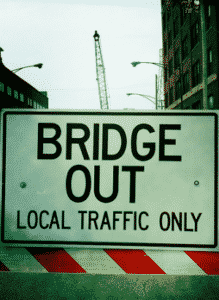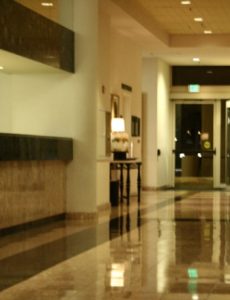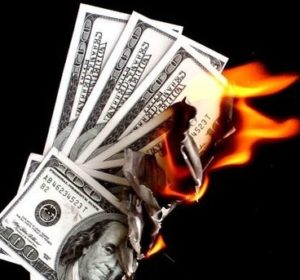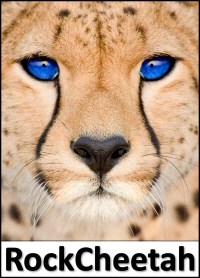The US hotel industry has reached a crossroads. After seven years of continual growth following its worst year since the great depression, US hotel industry performance should expect to plateau in 2017. It’s tough love time for an industry that continues to consolidate, but remains too timid to prune brand portfolios that confuse customers and commoditize lodging product through undifferentiated brand bloat. Plus, competing against rapidly growing, favorably perceived global organizations like Airbnb that structurally trade in unique, highly personalized experiences, does not result from inaction.
Transforming Hotel Industry Growth Strategy
Video of the hotel industry leadership panel from the 2011 HITEC conference discussing the RockCheetah/Amadeus IT Group white paper, “Transform Your Growth Strategy Now – Remove barriers between hotel technology,marketing and operations.” The discussion with Flo Lugli from Wyndham, Mike Blake from Hyatt and Caryl Helsel from Aramark explores the role an IT Pathfinder can play in facilitating hospitality industry business transformation.
White Paper: Bridging Hotel Business and Technology Priorities
The hotel industry requires an IT Pathfinder to help align hotel business and technology priorities over the next three years so the industry can successfully leverage information technology to drive business growth and profitability. A RockCheetah/Amadeus IT Group white paper, “Transform Your Growth Strategy Now – Remove barriers between hotel technology,marketing and operations” explores the role an IT Pathfinder can play in facilitating hospitality industry business transformation.
Hotel Industry Survey – How to Align Business and Technology Priorities?
After radically cutting costs and deferring projects to survive the recession hotel groups are relying on technology to help them maintain operational efficiencies and keep costs low as business volumes return to normal. This hotel industry survey asks for the top business and information technology priorities, plus how any gaps will be bridged over the next 36 months.
Five Year US Hotel Occupancy – Average Rate – RevPAR Comparison
The US hotel industry is recovering but still has considerable territory to cover before regaining the profitability seen in 2007 & 2008. To offer a more complete picture of the US hotel industry as a whole over the past five years, below are full year-over-year comparisons of the three bellwether metrics for the global hotel industry: Occupancy Percentage (Occ), Average Daily Rate (ADR) and Revenue Per Available Room (RevPAR.) Additionally, a linear presentation of the same data is provided to more clearly illustrate the trends over time. Finally, the peaks and valleys for each metric are provided. This information clearly depicts the US hotel industry as showing marginal improvement over the depths of the recession in 2009, but far from nearing the heady performance of 2007 & 2008.
What’s Wrong With the US Hotel Industry Recovery?
While the US hotel industry recovery is being highlighted by occupancy growth relative to 2009, considerable ground remains to be covered to attain the occupancy, pricing and profitability levels of 2007 & 2008. At the present time, the hotel business is hovering around 2006 levels. The combined effect of the economic downturn, increased share of online travel agencies and the related merchant model, plus a reduction in US government per diem rates will continue to create challenges for industry rate increases moving into 2011.
Travel Industry Site Traffic Rebound – Not a Hotel Slam Dunk
Compete produced an analysis that indicates traffic to hotel brand and Online Travel Agency hotel specific web pages have increased faster than airline and car rental sectors, indicating a faster path to recovery. Unfortunately, the increase in site traffic has not translated to improved hotel performance as hotels continue to deeply discounting their product to shift market share from competitors. As the hotels fight to support occupancy and average rate, share of leisure travel bookings is shifting away from hotel brand sites to the OTAs.
With the steepest drop in US hotel net operating income on record and non-performing Commercial Backed Mortgage Securities hotel loans hovering close to 15%, the US hotel industry appears to be preparing for a difficult stretch that will continue to provide travelers with excellent hotel values, but test the patience and wallets of hotel owners.
US Hotel Performance – Time for a Baseline Reset?
US hotel industry performance has not yet shown signs of recovery. Declines in all key industry metrics – occupancy percentage, average daily rate (ADR) and revenue per available room (RevPAR) continue to decline in 2009 when compared to comparable periods in 2008. Smith Travel Research (STR), PriceWaterhouseCoopers(PWC) and PKF International (PKF) all forecast that ADR and RevPAR will continue to decline in 2010. Reviewing peak period weekly performance statistics, it appears that the US hotel industry needs to prepare for “A New Normal” with lower corporate and group business and value oriented leisure travelers when supply and demand reach equilibrium.
Freedom of Choice in Expedia Contract Negotiations?
Contract negotiations between Choice Hotels International and Expedia have broken down, resulting in Choice brands being removed from Expedia’s websites. As negotiating power now favors Online Travel Agencies, hotel brands must maintain discipline to retain mutually beneficial terms. Seeing continued declines in both occupancy percentage and average rate, hotel owners may be willing to exchange future margins for immediate business volume. Hotel brands are challenged to maintain chain-wide pricing integrity and competitive positioning the economy improves. Hotel brands able to maintain strategic alignment with its hotel portfolio will have the best prospect to emerge stronger when the industry recovers.
US Hotel Industry Recession Enters New Rate Erosion Phase
The United States hotel industry is experiencing an unprecedented downturn. All hotel industry performance metrics, Average Daily Rate, Occupancy Percentage, and Revenue per Available Room have all trended downward over the past year. At the end of June, based on reporting from Smith Travel Research, national average room rates began to drop at a more rapid pace than occupancy percentages, marking the start of a new phase in the recession. The deeper discounting that has begun is on top of rate cuts that have already return average room rates to 2006 levels.


















